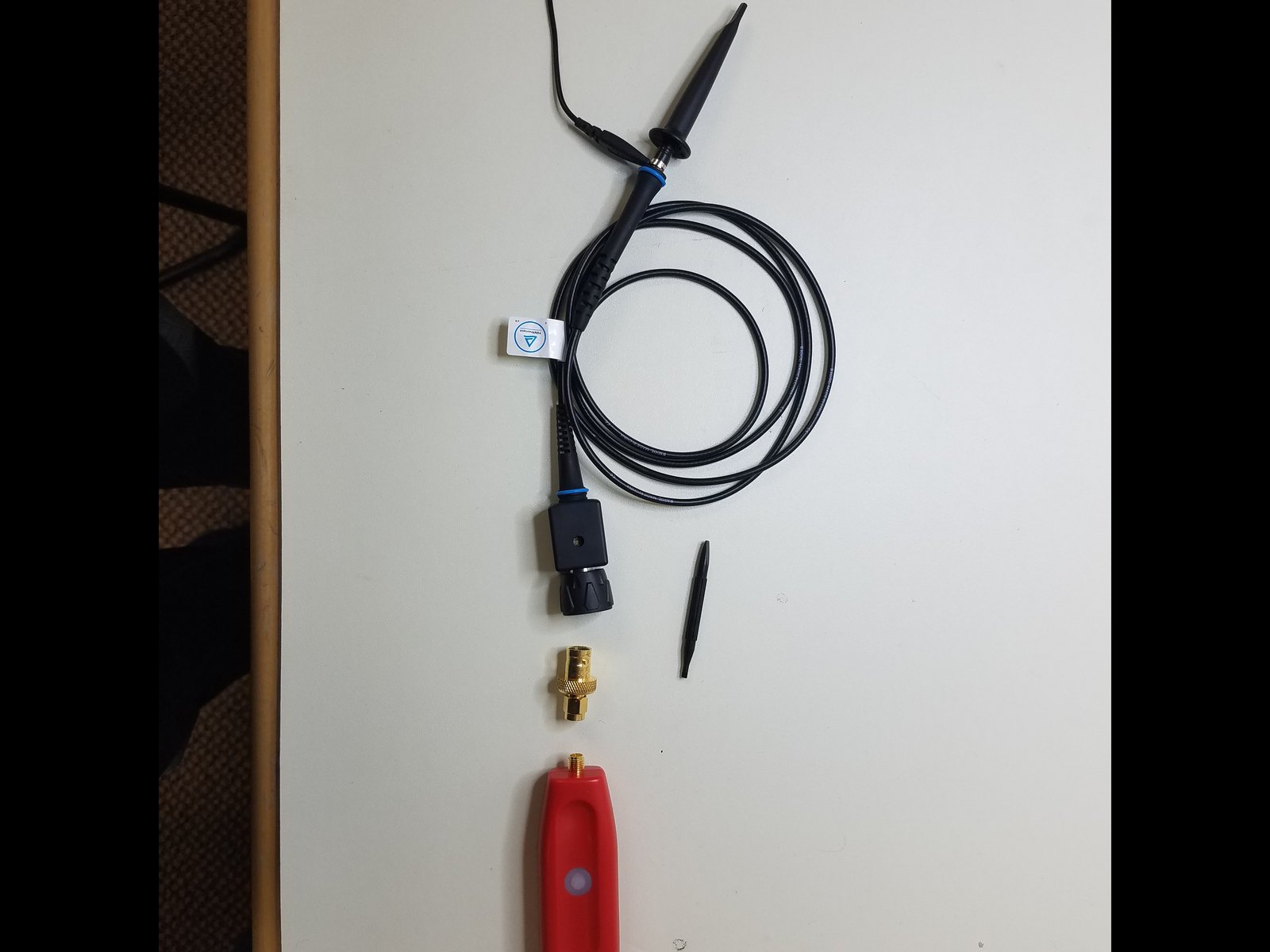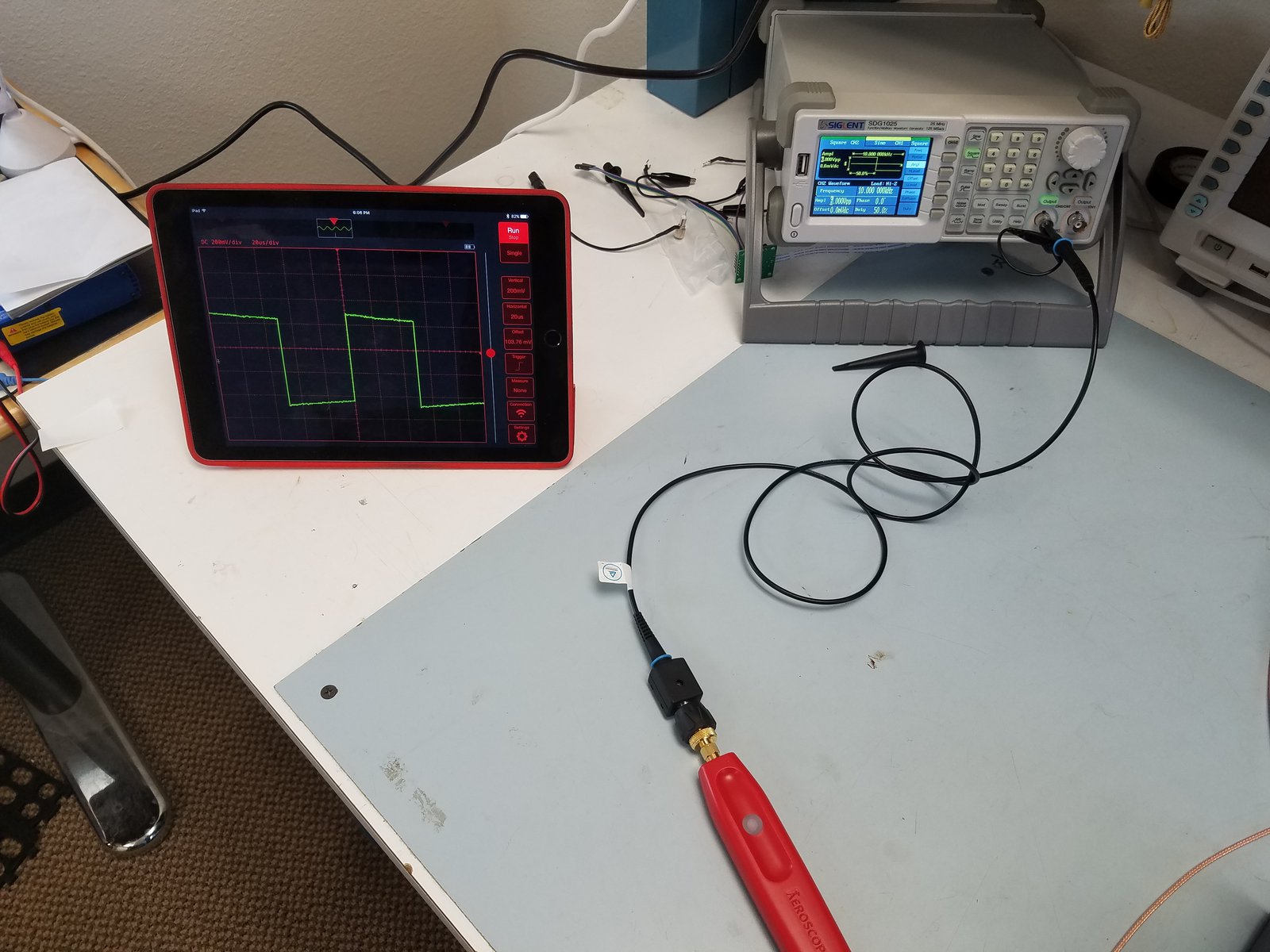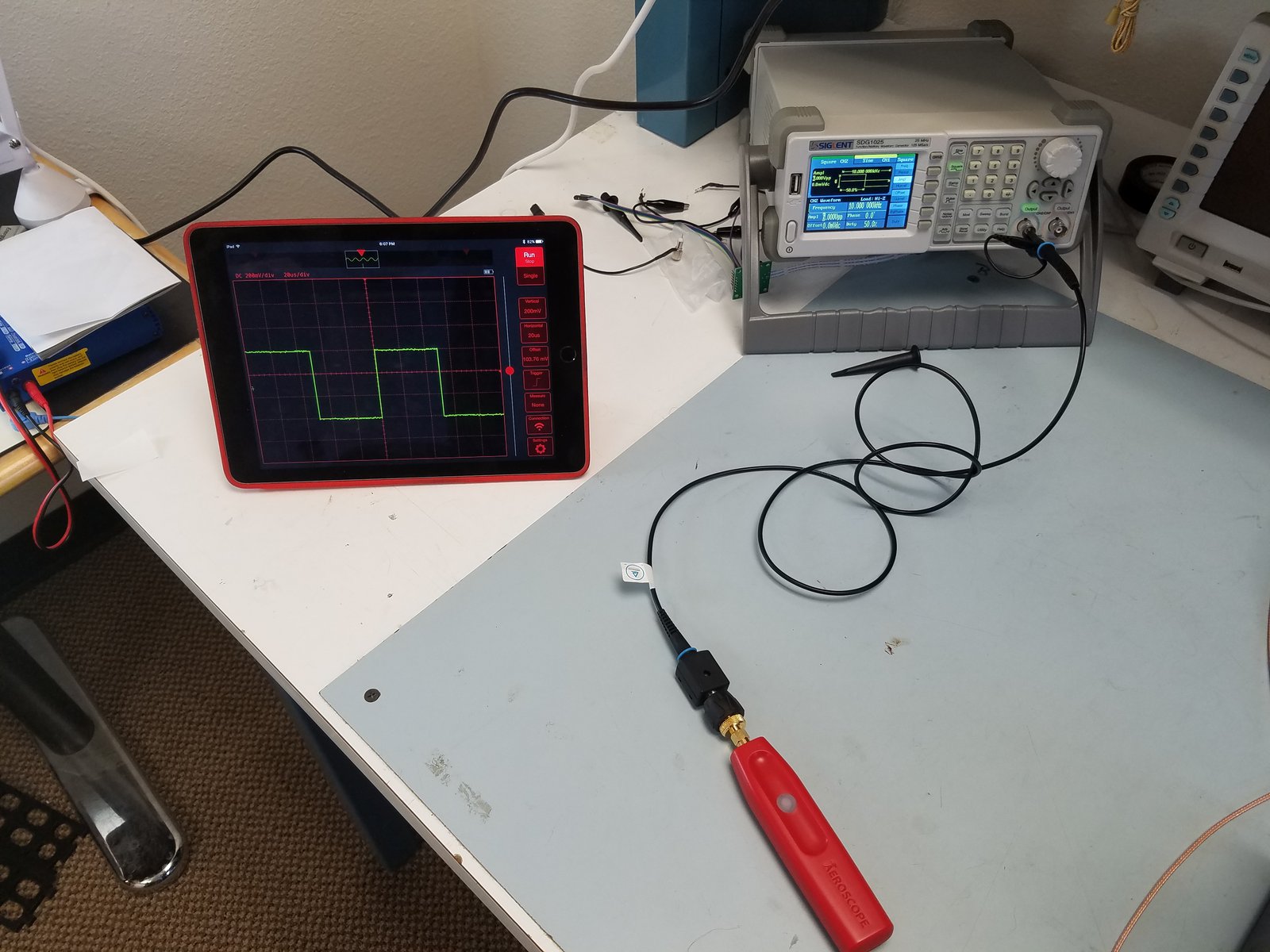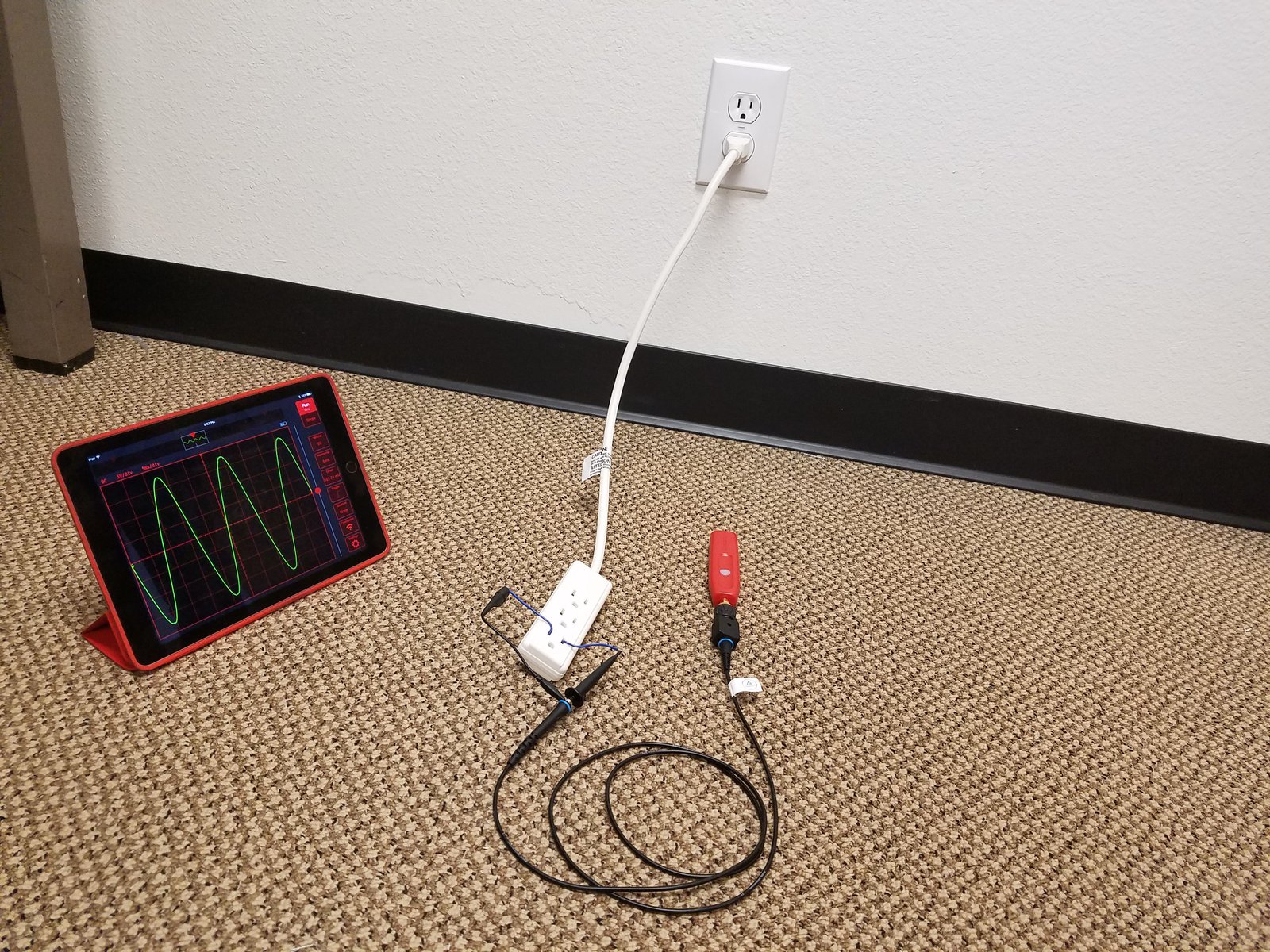Project update 4 of 11
10x Probe Demonstration
Aeroscope has a +/- 40V measureable input range which is plenty for most applications but sometimes isn’t quite enough. Fortunately, we designed Aeroscope’s input impedance to be compatible with most standard passive probes. As long as the passive probe you are using is compatible with Aeroscope’s 1M || 17 pF input impedance you can connect your probe and look at much bigger signals, e.g. +/- 400 V signals with a 10x probe. In this update I’m going to demonstrate using a 10x probe to measure US line voltage (120 Vrms or ~ 170 Vpeak).
The first thing you’ll need to do is adapt your standard probe to fit Aeroscope’s SMA input. Most probes use a BNC connector, so you will need an SMA to BNC adaptor. In the picture below you can see how Aeroscope, the passive probe, and the adaptor all fit together.
Once you have the passive probe connected to Aeroscope, you will need to compensate it. Connect the passive probe to a square wave, I’m using a function generator to supply a 10 KHz, 6 Vpeak_to_peak input. Adjust the compensation capacitor on the passive probe until the square wave looks compensated. If you aren’t familiar with compensating scope probes there are plenty of resources online that explain the process. In the two photos below you can see the shape of the square wave prior to compensating it and after it is compensated. Notice how the top and bottom edges of the square wave aren’t flat in the uncompensated photo and are flattened out nicely in the second photo.
After you have compensated the probe for Aeroscope’s input impedance you are ready to go. In the below photo I’m measuring the line voltage by shoving some wires into a power strip. Line voltage is extremely dangerous and can kill you! Don’t try this at home unless you know what you are doing and take the appropriate safety precautions. For example, the SMA to BNC adaptor that I am using has an exposed metal ground, if you were to hook the ground on your probe up to the "hot" connection on your wall outlet you could be shocked by touching the adaptor. You must make sure that the ground on the probe is not connected to high voltage or you risk electrocution!
Thanks for reading and stay tuned for more updates!
-The Aeroscope Team



